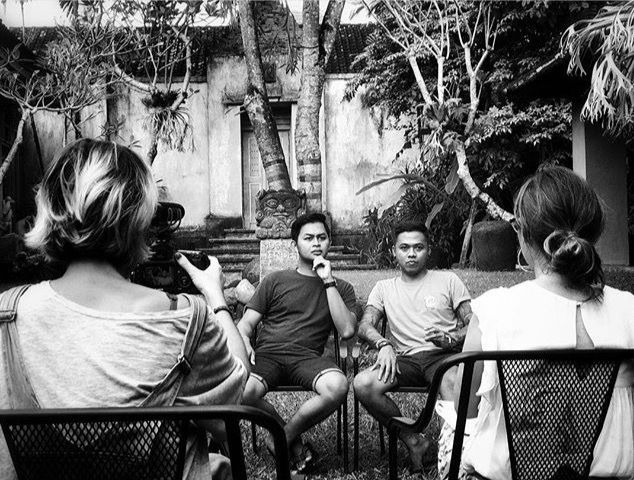Geopolitical history permeates epistemologies and ontologies and manifests through creative practices such as design. Equally, it has always played a key role in environmental and social conditions that affect human well-being. Exploring the intersection of fashion and colonialism asks social questions about creativity, humankind, and more than humankind. A 'between' positionality can expand our understanding of ethical and artistic dimensions of social change through mobility.
This study explores the potential of digital ethnography and visual narratives in the 30-minute experimental audio-visual Paradise Paradigm to capture the interrelationship between fashion, travel, tourism, cultural diversity, environment, sustainable development and our spiritual development in Bali, Indonesia. I aimed to explore opportunities for design and ethnographic documentary-making to facilitate a more sustainable future for Bali that supports the island's spiritual and regenerative economic value. To develop a conceptual framework to support tourism research by exploring different notions of understanding and avoiding Western-centric views. I worked with ethnographic and auto-ethnographic methods to establish an aesthetic and visual framework around the cultural model of Melasti and Nyepi, the Day of Silence, to challenge Western dominant thinking concerning paradise and time. Ezio Manzini (2015), a leading thinker in design for sustainability, discusses innovation and design as a solution to building a resilient culture and argues that it requires people to be "active" to generate conditions for this; the word active implies movement. However, the underpinnings of the film capture action as a mental model, slowing down through its use of audio and visual style. Whether we call it ‘slowing down’ or ‘reconnecting’, it is clear that cultural sustainability has a critical dimension related to time if we aim to create meaning from internal or community processes rather than global commerce.
The film’s storytelling seeks to gently uncover and illuminate other ways of seeing. I aimed to balance both positive and negative and provide a moral compass for tourism and mobility research in Indonesia and elsewhere. New insights conveyed by the evocative auto-ethnographic approach and the interviews with local Balinese depict themselves at a crossroads with potential futures ahead. Thus, identifying a value change beyond ocular and western-centric representations and maintaining an anthropologist sensibility that highlights the local people (rather than anthropologists) are experts in their worlds. The interviews were shot in black and white to give them a more serious tone and demarcate and separate them from the more poetic approach to the visual narrative in the rest of the film. The participants each have their unique vision of cultural and environmental sustainability and take the idea of representation, environment and ‘other’ into their own hands. Each has its agenda to challenge Western dominant thinking concerning the exotic other, tourist gaze and paradise image. These are underpinned by the common denominator of a new paradigm based on the significant social and cultural narratives identified by the virtues of the Balinese and their Tri Hita Karana philosophy.
This video-way-of-knowing builds upon emotional geographies using the metaphor of the night sky and emerging constellations as an interplay of cross-collaborative approaches from scholars of varying fields. It takes the approach that the goal of a sustainable future is to produce analytical yet evocative narratives that “change us and the world we live in for the better” [(Holman Jones, (2005), p. 764]). The film and this study conclude with the work of Davis (2009), who asserts that people are the solution, not the problem and that through rediscovering a new appreciation for the diversity of the human spirit. However, one of the central challenges of our times is that it is here amongst humanity that answers are to be discovered. In the context of the film, the viewer is gently brought to understand the Indonesian term underpinning the research, Saling Menhargai, which means how to develop a mutual appreciation and respect between the tourist and the local. If international tourism stakeholders, the community, and visitors to the island truly share a common interest in cultural and environmental preservation, new ways of understanding the impact developments are having must be sought alongside building community-based tourism.
Further information about this can be read in the following journal paper - Other ways of seeing: film as digital materiality and interlocutor for community-based tourism relationships in Bali:
https://doi.org/10.1504/IJTA.2018.093298
Credits:
Cinematographer: www.fleurboonman.com
Music: http://www.gamelanvoices.com
